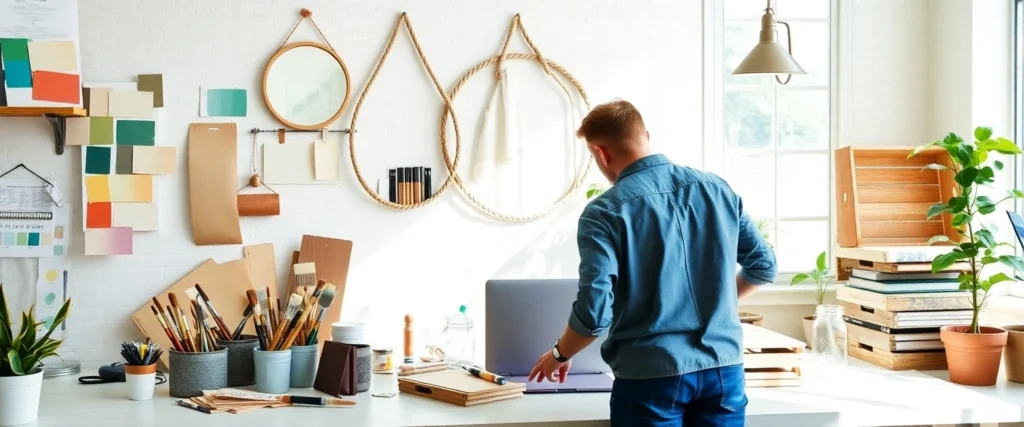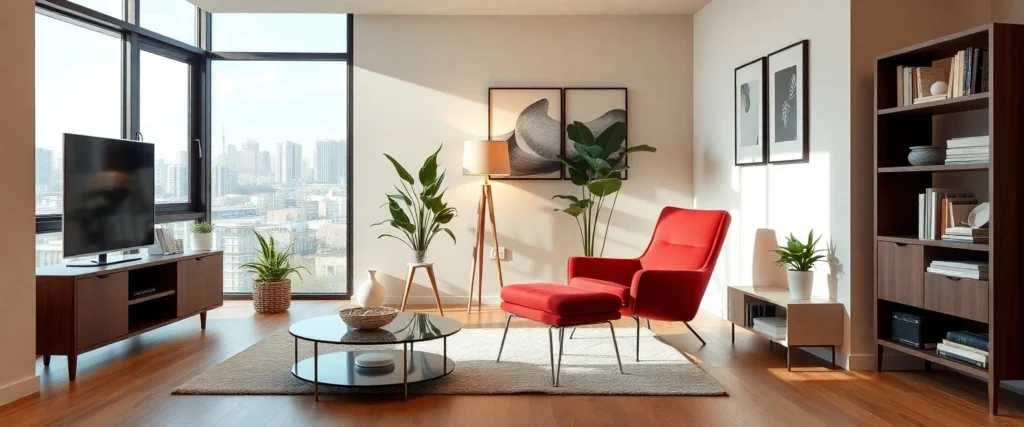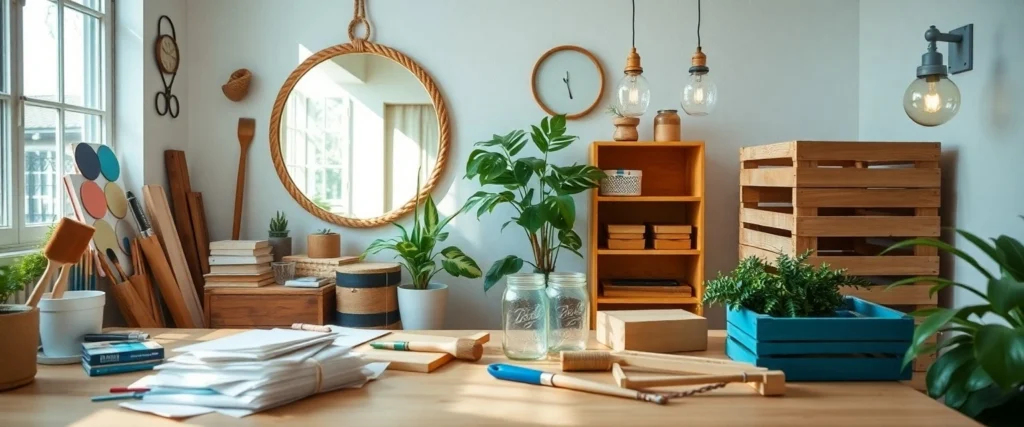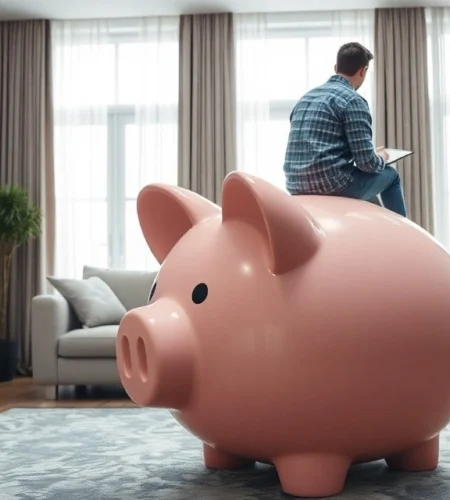Have you ever wondered how everyone else seems to have these Instagram-worthy spaces while you’re working with a ramen noodle budget? Here’s the thing—some of the most stunning, personality-filled homes I’ve encountered weren’t created with unlimited funds. They were crafted by people who understood that cheap home decor ideas aren’t about cutting corners; they’re about getting creative with what’s available.
Table of Contents
The Complete Budget Transformation Solution
Transform your space for under $200 using strategic thrifting, DIY projects, and clever repurposing. Cost range: $50-200 | Time investment: 2-4 weekends | Difficulty level: 2/5
Core Implementation Steps:
• Start with one impactful focal point (accent wall or statement furniture piece)
• Layer in affordable textiles and lighting for instant warmth
• Add personality through curated collections and plants
• Create storage solutions that double as decor
For complex room layouts or structural changes, consider consulting an interior design professional.
Why Budget Decorating Actually Works Better
In my six years of solo living, I’ve learned something counterintuitive: constraints make you more creative. When you can’t just throw money at a decorating problem, you start seeing possibilities everywhere. That thrift store vase becomes a perfect planter. Those vintage books create the ideal coffee table styling. Suddenly, you’re not just decorating—you’re curating.
The pattern is simple: the most satisfying spaces aren’t the most expensive ones. They’re the ones where every piece has a story, where function meets creativity, and where your personality shines through without breaking the bank.
Research from the Journal of Environmental Psychology shows that personalized spaces—regardless of cost—significantly impact mood and productivity. A 2023 study by the American Society of Interior Designers found that thoughtfully decorated spaces improved residents’ sense of well-being by 40%, with budget-conscious decorating showing equal benefits to high-end designs.
Your Three-Tier Approach to Affordable Style
Budget-Conscious Solutions ($0-50)
These are your immediate wins, the changes you can make this weekend with items you likely already own or can find for under $10.
The Rearrangement Revolution: Sometimes the best cheap apartment decor starts with moving what you already have. I spent three months frustrated with my cramped living area before realizing I could angle my couch to create a natural conversation area and open up the entire flow. Cost: $0. Impact: transformative.
DIY Art Gallery: Instead of buying expensive artwork, create your own gallery wall using magazine pages, postcards, fabric samples, or even interesting packaging. Frame them in matching thrift store frames (usually $1-3 each) or create a cohesive look with consistent matting. The key is curation—choose pieces that speak to your aesthetic and arrange them thoughtfully.

Textile Magic: A few strategically placed throw pillows, a cozy blanket, or a vintage scarf draped over a chair can completely change the vibe of a room. Hit up thrift stores, estate sales, or even your own closet for textiles that add color and texture.
Moderate Investment ($50-200)
This is where you start making more significant changes that will serve as the foundation for your space.

The Power of Paint: An accent wall can transform any room for the price of a gallon of paint. I painted my tiny bedroom’s focal wall a deep forest green, and suddenly the space felt twice as sophisticated.
Pro tip: Choose colors that complement your existing furniture rather than fighting against it. Test paint samples in different lighting conditions throughout the day—what looks perfect in morning light might feel overwhelming by evening.
Lighting Transformation: Nothing says “cheap apartment” like harsh overhead lighting. Replace it with warm, layered lighting using table lamps, floor lamps, and string lights. Thrift stores are goldmines for unique lamp bases—I found a ceramic piece that looks like a $200 West Elm lamp for $8.
Strategic Furniture Finds: One statement piece can anchor an entire room. Look for solid wood furniture at estate sales and thrift stores. A well-made dresser, bookshelf, or coffee table from the 1970s often has better construction than new budget furniture and costs a fraction of the price.
Premium Optimization ($200+)
When you’re ready to invest more significantly, these changes will have lasting impact.
Custom Built-ins on a Budget: Use IKEA hacks to create custom storage solutions. Their basic shelving units can be transformed with wood trim, paint, and hardware upgrades to look like expensive built-ins. I created a entire wall of “custom” shelving for under $300 that would have cost $2,000 from a contractor.
Quality Textiles Investment: A few high-quality pieces—a real wool rug, linen curtains, or a well-made throw—will elevate everything else in the room. These items last for years and can move with you through multiple living situations.
Room-by-Room Home Decor Ideas
Living Room: The Heart of Your Home
Your living room needs to multitask in apartment living, so focus on pieces that serve multiple purposes.
Create a Focal Point: Whether it’s a gallery wall, a large plant, or a statement mirror, give the eye somewhere to land. I found a massive vintage mirror at an estate sale for $25 that completely transformed my small living room by reflecting light and making the space feel twice as large.

Layer Your Lighting: Harsh overhead lighting is the enemy of ambiance. Use a combination of table lamps, floor lamps, and candles to create warm, inviting light. Thrift stores often have unique vintage lamps that just need new lampshades—an easy and affordable update.
Maximize Vertical Space: Use tall bookshelves, wall-mounted storage, and artwork placed higher on the walls to draw the eye upward and make ceilings feel taller.
Bedroom: Your Personal Sanctuary
In a one-room apartment, creating a distinct sleeping area is crucial for both function and mental health.
Textile Layering: Start with your bed as the focal point. Mix patterns and textures in similar color families. A vintage quilt over modern sheets, paired with a few carefully chosen throw pillows, creates depth without looking busy.
Create Privacy: Use curtains, room dividers, or even a tall bookshelf to create visual separation between sleeping and living areas. This doesn’t have to be expensive—hanging curtains from the ceiling can create the illusion of a separate room for under $50.
Nightstand Alternatives: Instead of buying matching nightstands, use stacked vintage suitcases, a wooden crate, or even a small ladder shelf. These options often cost less and add more personality.
Kitchen: Function Meets Style
Rental kitchens are notoriously challenging, but there are ways to add personality without losing your security deposit.
Open Shelving Display: Remove cabinet doors (save them for when you move) and style your dishes as decor. This works especially well with vintage dishes or interesting glassware found at thrift stores.
Removable Backsplash: Use peel-and-stick tiles or removable wallpaper to create a custom backsplash. The key is choosing something that complements your overall aesthetic while being completely removable.
Herb Garden: Fresh herbs in vintage containers or mason jars serve double duty as decor and functional cooking ingredients. Even a small windowsill can accommodate a few pots.
The Art of Thrifting for Decor
Successful thrifting isn’t about luck—it’s about strategy. I’ve developed a system over the years that has never failed me.
Know Your Measurements: Always carry a tape measure and know the key dimensions of your space. That gorgeous armchair is worthless if it won’t fit through your door.
Shop with Purpose: Go in with a list of what you’re looking for, but stay open to unexpected finds. Some of my best discoveries happened when I was looking for something completely different.
Quality Check: Learn to spot good construction. Look for solid wood furniture, real leather, and quality hardware. A well-made piece from the 1960s will outlast most new budget furniture.
Pro tip: Think beyond original purpose. A vintage suitcase becomes a coffee table with storage. Mason jars become pendant lights. A wooden ladder becomes a bookshelf. The best thrifters see potential, not just what’s in front of them.
DIY Projects That Actually Work
Floating Shelves from Reclaimed Wood
Hit up construction sites (with permission) or furniture stores for scrap wood. Sand, stain, and mount with simple brackets for custom shelving that looks like it cost hundreds.
Rope and Wood Mirror Frame
Transform a basic mirror with rope and reclaimed wood for a boho-chic look. Total cost: under $20. Time investment: one afternoon.

Vintage Crate Storage
Old wooden crates (found at flea markets or online) can be stacked, mounted on walls, or used as side tables. Sand them down and add a coat of stain or paint for a polished look.
Mason Jar Lighting
Turn mason jars into pendant lights, table lamps, or wall sconces. The key is using quality electrical components and following safety guidelines.
Pro tip: Work in phases. Don’t try to decorate your entire space at once. Focus on one room or even one corner at a time. This approach prevents overwhelm and allows you to live with changes before making new ones.
Maximizing Impact with Minimal Investment
Stick to a Color Palette: Choose 3-4 colors that work well together and stick to them throughout your space. This creates cohesion even when your furniture comes from different sources and eras.
Invest in Good Lighting: I cannot overstate this enough. Good lighting can make a $20 thrift store lamp look like a designer piece, while bad lighting can make expensive furniture look cheap.
Mix High and Low: Combine one or two higher-quality pieces with your budget finds. A well-made vintage leather chair can elevate an entire room of affordable pieces.
Pro tip: Trust your instincts. The best budget decorating happens when you stop trying to recreate someone else’s style and start creating your own. If you love it, it belongs in your space.
Seasonal Refreshes That Won’t Break the Bank
Your space should evolve with you, and small seasonal changes keep it feeling fresh.
Spring: Add fresh flowers, switch to lighter textiles, and introduce more plants. A few stems from the grocery store can transform a room for under $10.
Summer: Swap heavy fabrics for lighter linens, add mirrors to reflect more light, and bring in coastal elements like shells or driftwood.
Fall: Layer in warm textures, add candles for cozy lighting, and incorporate natural elements like pinecones or branches.
Winter: Focus on creating warmth through lighting, add extra throw blankets, and use rich colors that feel comforting during shorter days.
Common Mistakes to Avoid
Buying Everything at Once: I learned this the hard way when I tried to furnish my first apartment in one weekend. The result looked like a showroom—technically coordinated but completely lacking personality.
Ignoring Scale: A tiny apartment can handle one large piece better than lots of small ones. One substantial bookshelf looks more intentional than three small ones.
Forgetting Function: Pretty is nice, but functional is essential. Every piece should serve a purpose, even if that purpose is simply making you happy.
Following Trends Too Closely: Trends change, but your personal style should evolve more slowly. Choose pieces you genuinely love rather than what’s currently popular.
Building Your Personal Style Library
The best cheap apartment decor comes from understanding what you actually like, not what you think you should like.
Create a Mood Board: Use Pinterest, magazine clippings, or even a simple notebook to collect images that speak to you. Look for patterns—are you drawn to clean lines or organic shapes? Warm colors or cool tones?
Start Small: Test new styles with small, inexpensive pieces before committing to larger items. A $5 throw pillow can help you decide if you actually like that bold pattern.
Document Your Wins: Take photos of arrangements and combinations that work. This helps you replicate successful looks in new spaces.
Frequently Asked Questions
How can I make my rental feel like home without losing my security deposit?
Focus on removable changes that won’t damage walls or fixtures. Use removable wallpaper, peel-and-stick tiles, and damage-free hanging solutions. Invest in quality textiles, lighting, and furniture that you can take with you. The key is creating personality through what you bring into the space rather than permanent modifications.
What's the best way to shop thrift stores for home decor?
Go in with measurements and a loose plan, but stay open to unexpected finds. Visit regularly—inventory changes constantly. Check for solid construction, especially with wood furniture. Don’t be afraid to see potential in pieces that need minor repairs or updates. The best treasures often require a little vision to see their possibilities.
How do I create a cohesive look when buying furniture from different sources?
Stick to a consistent color palette of 3-4 colors throughout your space. This creates visual unity even when pieces come from different eras or sources. Also, repeat materials—if you have one brass accent, add another brass element elsewhere. Finally, consider scale and proportion. Even different styles can work together if they’re appropriately sized for your space.
What are the most impactful budget decorating changes I can make?
Start with lighting—it’s the quickest way to transform any space. Then add textiles through throw pillows, blankets, and rugs. Create a focal point with either a gallery wall or one statement piece. Finally, add plants for life and color. These four changes alone can completely transform a room for under $100.
How can I decorate a small apartment without making it feel cluttered?
Focus on vertical space rather than filling floor space. Use multifunctional furniture that serves storage purposes. Stick to a consistent color palette to create visual calm. Choose one or two larger pieces rather than many small ones. Most importantly, be selective—every item should earn its place through beauty, function, or joy.
What DIY projects have the biggest impact for beginners?
Start with projects that require minimal tools and skills. A gallery wall using thrift store frames creates major visual impact. Painting an accent wall transforms a room for the cost of paint. Simple textile projects like recovering throw pillows or creating window treatments are very forgiving for beginners and provide instant gratification.
The Bottom Line
Your space doesn’t need to cost a fortune to feel like home—it just needs to feel like you. The most beautiful apartments I’ve visited weren’t the most expensive ones; they were the ones where every element told a story about the person who lived there. Where thrifted treasures mixed with meaningful objects, where function met creativity, and where budget constraints sparked innovation rather than limitation.
Creating a space you love on a budget isn’t about making compromises—it’s about making choices. Every piece you bring home should earn its place through beauty, function, or the joy it brings you. When you approach decorating this way, you’re not just saving money; you’re creating something infinitely more valuable: a home that truly reflects who you are.
Your apartment is your canvas, your laboratory, your sanctuary. The fact that you’re working with a budget doesn’t make it less important—it makes every choice more intentional. And that intentionality? That’s what transforms a space from simply functional to genuinely beautiful.
Next Steps:
– Today: Walk through your space and identify one area that could use attention
– This Weekend: Visit local thrift stores with measurements and a clear vision
– This Month: Complete one DIY project that addresses both function and style
– Ongoing: Build your personal style library and document what works
Remember, the best homes aren’t the ones that look like magazine spreads—they’re the ones that feel like coming home to yourself every single day.
Use of this website constitutes acceptance of all our disclaimers and legal agreements.

